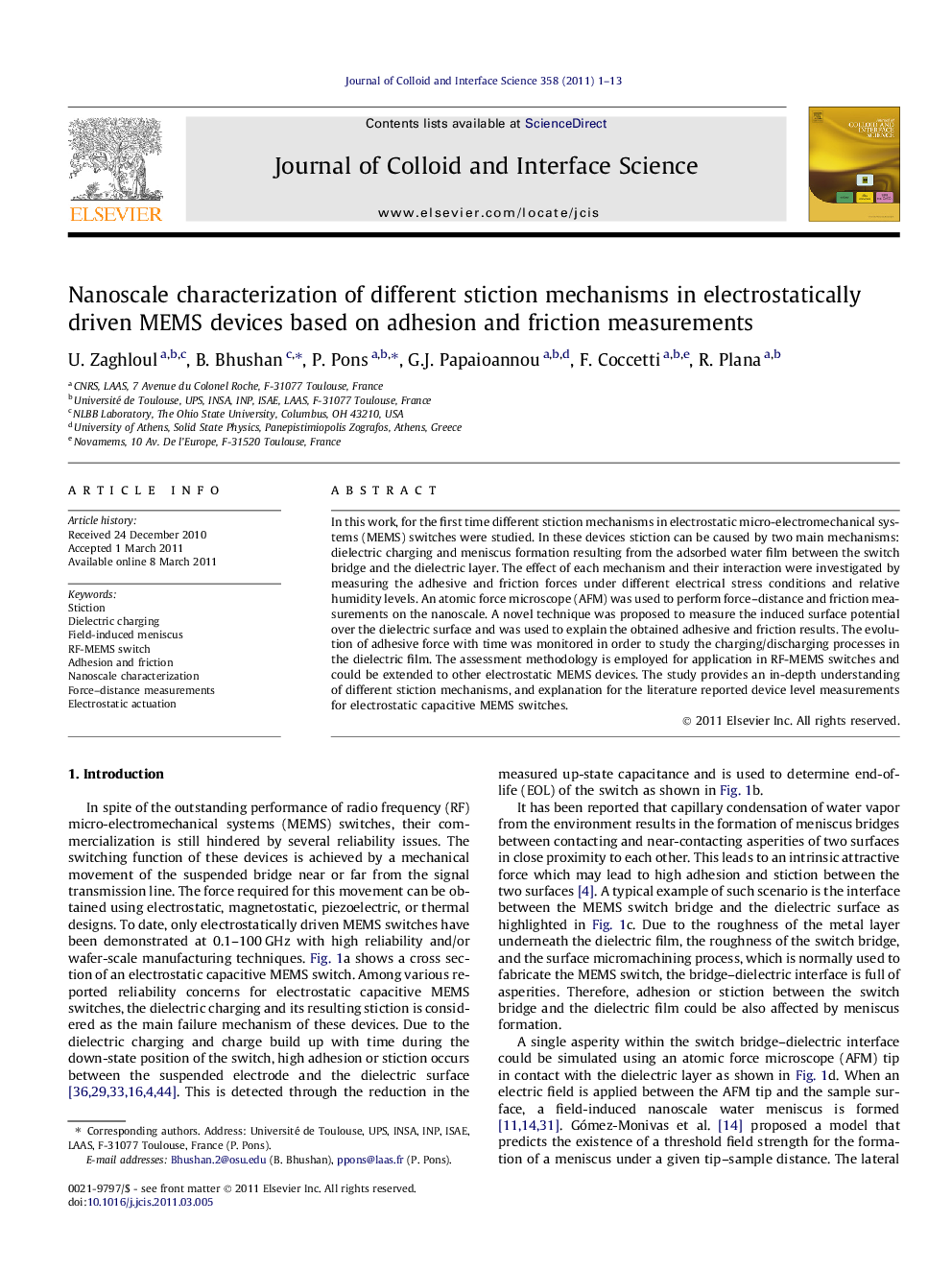| Article ID | Journal | Published Year | Pages | File Type |
|---|---|---|---|---|
| 608622 | Journal of Colloid and Interface Science | 2011 | 13 Pages |
In this work, for the first time different stiction mechanisms in electrostatic micro-electromechanical systems (MEMS) switches were studied. In these devices stiction can be caused by two main mechanisms: dielectric charging and meniscus formation resulting from the adsorbed water film between the switch bridge and the dielectric layer. The effect of each mechanism and their interaction were investigated by measuring the adhesive and friction forces under different electrical stress conditions and relative humidity levels. An atomic force microscope (AFM) was used to perform force–distance and friction measurements on the nanoscale. A novel technique was proposed to measure the induced surface potential over the dielectric surface and was used to explain the obtained adhesive and friction results. The evolution of adhesive force with time was monitored in order to study the charging/discharging processes in the dielectric film. The assessment methodology is employed for application in RF-MEMS switches and could be extended to other electrostatic MEMS devices. The study provides an in-depth understanding of different stiction mechanisms, and explanation for the literature reported device level measurements for electrostatic capacitive MEMS switches.
Graphical abstract(a) At 0 V, the difference in adhesive force caused by the liquid mediated meniscus (b) between the three samples is small. When voltage is applied, the electric field-induced meniscus (c) exists for samples 2 and 3 only and results in a considerable increase in adhesive force.Figure optionsDownload full-size imageDownload high-quality image (86 K)Download as PowerPoint slideHighlights► We investigate the physics of different stiction mechanisms in electrostatic MEMS. ► We study stiction caused by dielectric charging, water meniscus and their interaction. ► The electric field-induced meniscus is the dominant mechanism at higher humidity. ► For the annealed samples and at low humidity the field-induced meniscus is reduced. ► The evolution of adhesive force with time is used to study the dielectric charging.
